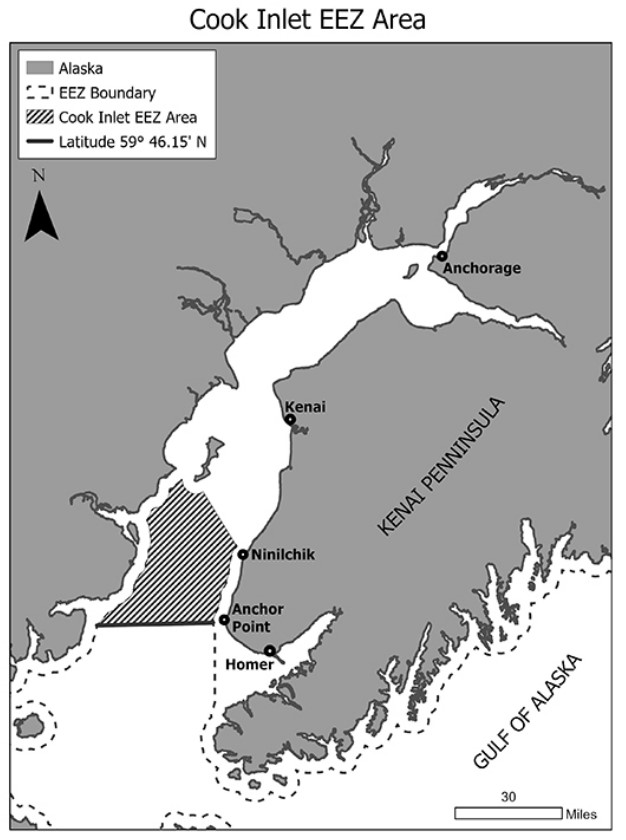Stepping into the role of overseeing salmon harvest in federal waters of the Alaska Cook Inlet, a responsibility previously held by the state, is the federal service, NOAA Fisheries. This transition, which has been in the making for decades, will see commercial and recreational salmon fishing within the inlet waters, located more than 3 miles offshore and designated as the federal exclusive economic zone (EEZ), resume this summer. The new management system will be officially in effect on May 30, 2024, under the watchful eye of NOAA Fisheries.

Up until this year, the state of Alaska managed salmon fisheries in state and federal inlet waters. Still, federal courts ordered the switch in management due to legal disputes over the past decade. In 2013, the United Cook Inlet Drift Association (UCIDA), an industry group of salmon drift netters, sued the federal government for failing to develop a salmon harvest management plan for the inlet federal waters. The National Marine Fisheries Services (NMFS) had delayed putting in a salmon plan. They put it on the plate of the Alaska Department of Fish and Game (ADF&G) due to the state-managed resource throughout the entirety of the state and federal waters within the inlet.
UCIDA's legal actions played a pivotal role in the management transition. The 9th U.S. Circuit Court of Appeals ruled in UCIDA’s favor eight years ago, stating, “Given the dire situation faced by UCIDA as a result of the federal government’s utter abdication of its (Magnuson-Stevens Act) responsibilities in this important fishery, the Proposed Judgement sought by UCIDA is immediately necessary.” In 2021, UCIDA filed another lawsuit when the North Pacific Fishery Management Council (NPFMC) attempted to close the federal waters to salmon fishing entirely during the transition. As a result, the federal water fishery remained open under a temporary state arrangement.
Under the new rule, fishermen who harvest salmon from federal waters and buyers and processors must have federal permits. The rule also prevents fishermen from harvesting from state and federal waters on the same day. It will also prevent the deployment of multiple nets and require additional documentation of catches, among other requirements. The fishery will use total allowable catch limits for management instead of fishing based on escapement goals like state fisheries.
The season in the zone will begin on June 20 and close “on or before” Aug. 15, with closures coming earlier. This is a total allowable catch for any salmon species reached before the season ends. To find more information on the catch limits within the EEZ Area, click here.
The new rule will be explained at two public meetings—on May 15 in Kenai and May 16 in Homer—and via webinar on May 22.
The new management system has raised concerns from multiple groups. According to the Alaska Beacon, when faced with choosing between management alternatives at an April meeting, NPFMC opted for none. They claimed that the system they use to manage commercial catches such as pollock and cod vastly differs from what would be needed to manage salmon properly. They claimed that the federal agencies are not equipped to do precise, flexible, and location-specific in-season salmon management and that there has been state practice.
ADF&G rejected an option to co-manage with the federal government and objected to the way the federal system is set to operate. They claimed that setting allowable season catches based on preseason forecasts is done with species such as pollock but will be a poor fit for salmon. The department’s commission, Doug Vincent-Land, wrote in a letter, “In short, the proposed Federal program utilizes tools not developed for salmon management, abandons long-standing management practices of the State of conservation and allocation purposed and places the burden of conservation entirely on the State if pre-season catch limits are over-forecasted.”
On the other hand, Indigenous harvests have claimed that federal management may bring new opportunity. Chairman of the Chickaloon Village Traditional Council, Gary Harrison, shared in written comments that the federal management of salmon in Cook Inlet federal waters “provides a long overdue opportunity for a Tribal fishery ahead of all other users.”
NMFS noted in the Tuesday Federal Register notice that the agency recognizes Cook Inlet salmon fisheries' complex and challenging nature.







